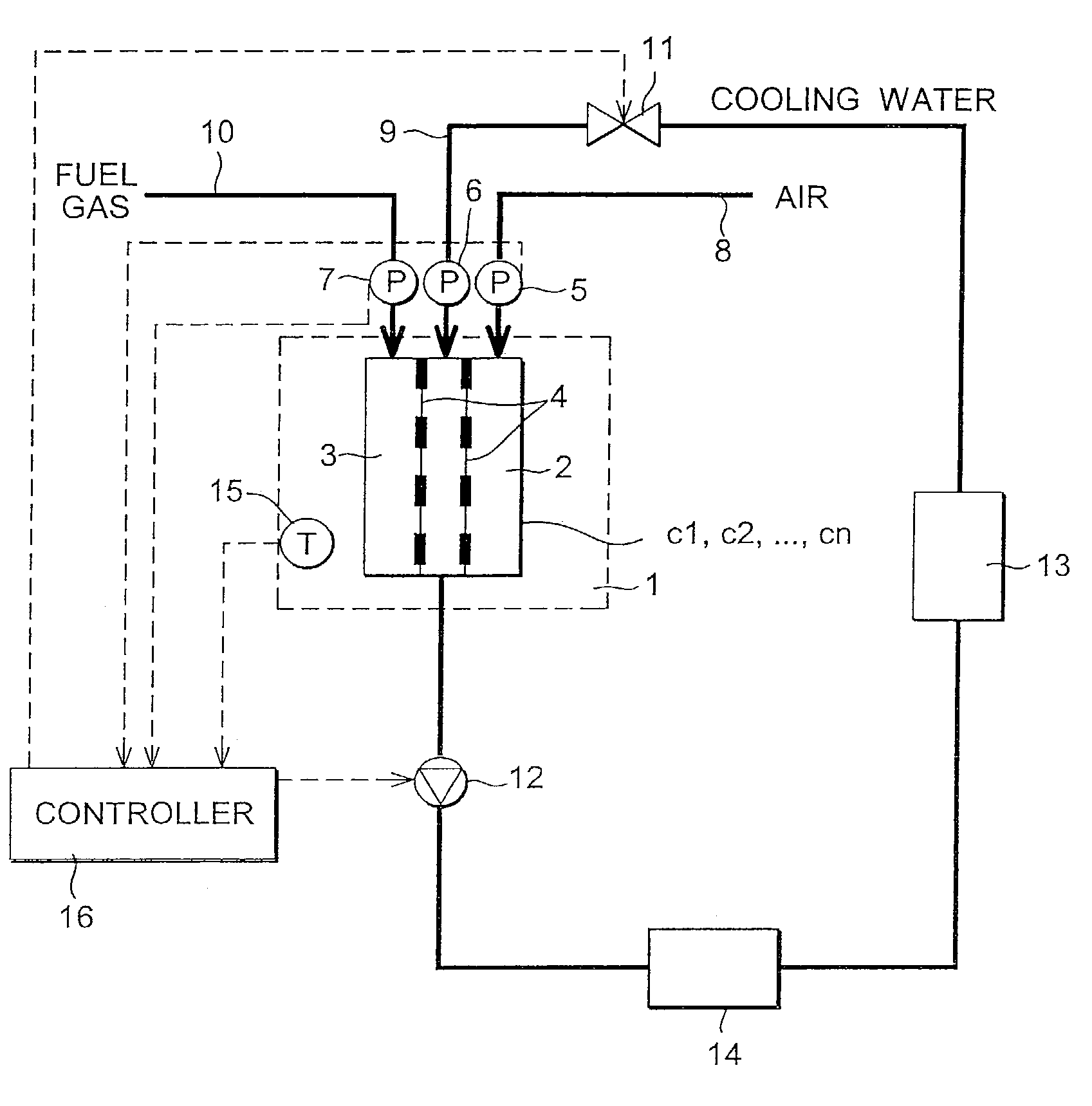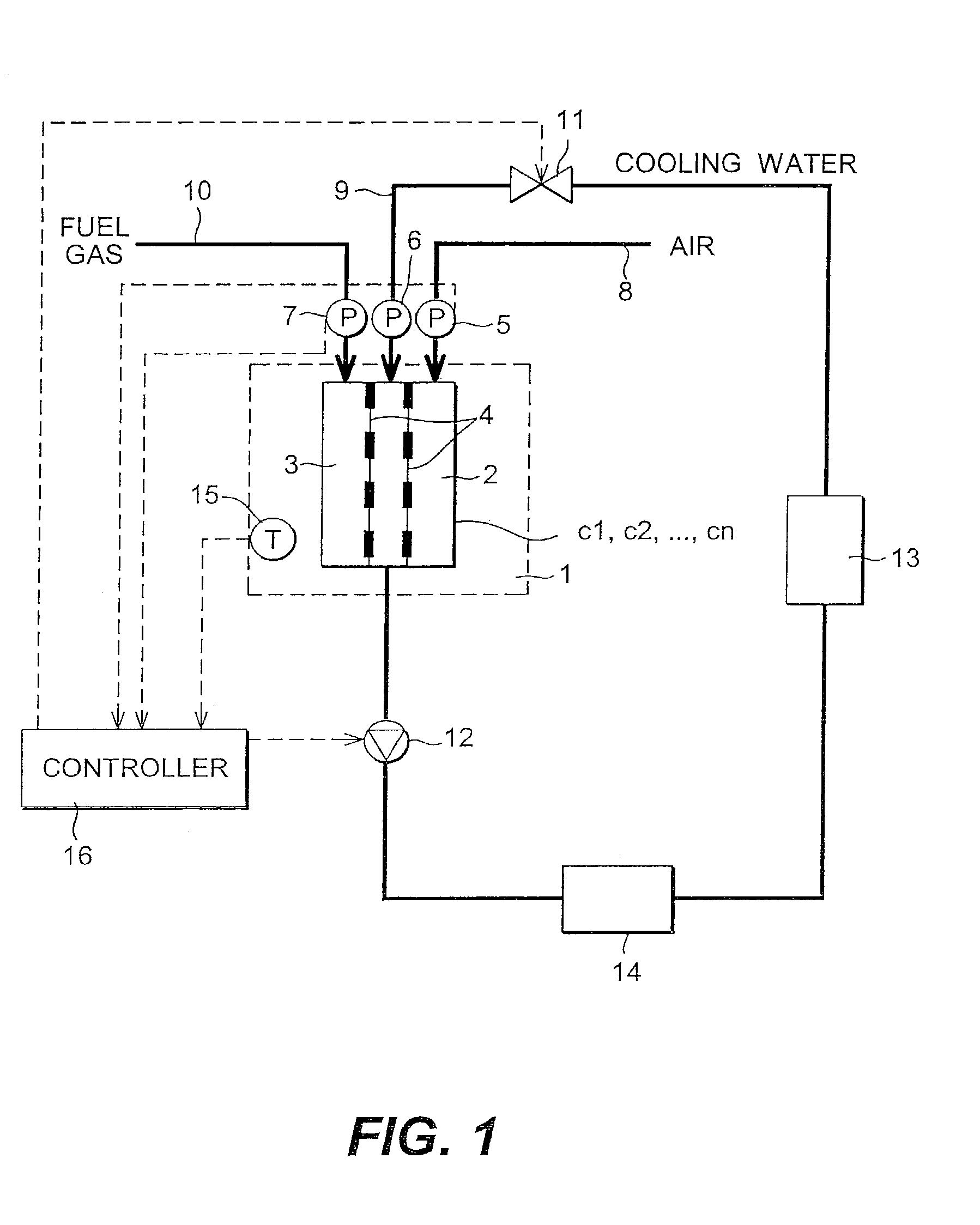Fuel cell system and its startup control
a fuel cell and system technology, applied in the field of fuel cell systems, can solve the problems of reducing the usability of the fuel cell vehicle, reducing lengthening the warm-up time so as to reduce the efficiency of the fuel cell, and prolong the warm-up time
- Summary
- Abstract
- Description
- Claims
- Application Information
AI Technical Summary
Benefits of technology
Problems solved by technology
Method used
Image
Examples
second embodiment
[0040]Next, this invention will be described.
[0041]FIG. 4 shows the construction of a fuel cell system of the second embodiment. Temperature sensors 21 are installed which measure the temperatures in each cell c1, c2, . . . , cn of the fuel cell stack 1, which is a difference from the first embodiment. For convenience, only three sensors 21 have been shown in FIG. 3, but there may be a larger or smaller number of the sensors 21 according to the number of the cells.
[0042]Moreover, the startup processings of the system performed by the controller 16 is also different. The controller 16 predicts water clogging from the temperature distribution of the cells, and performs pressure control of cooling water. The average of the cell temperatures is calculated, and the cooling water pressure Pcw is also controlled based on the differential pressure ΔP between the cooling water and the electrodes 2, 3 (cathode 2 and anode 3) at the inlet of the fuel cell stack, and the average Tcelave of cell...
third embodiment
[0052]Next, this invention will be described.
[0053]FIG. 6 shows the construction of the fuel cell system of the third embodiment. This is essentially identical to the construction of the first embodiment, however temperature sensors 31, 32 are formed in the cooling water passage 9 near the inlet and outlet of the fuel cell stack 1, respectively. Also, the startup processing of the system performed by the controller 16 is also different.
[0054]The controller 16 calculates a temperature difference ΔT of the cooling water between the fuel cell inlet and outlet. From this temperature difference ΔT, the reaction status inside the fuel cell stack 1 can be grasped, water clogging can be estimated and cooling water pressure control performed. The temperature difference ΔT can be measured by installing temperature sensors 31, 32 at the fuel cell inlet and outlet, respectively, as shown in FIG. 6, or by installing a thermocouple in the cooling water passage 9. In both cases, temperature measur...
PUM
 Login to View More
Login to View More Abstract
Description
Claims
Application Information
 Login to View More
Login to View More - R&D
- Intellectual Property
- Life Sciences
- Materials
- Tech Scout
- Unparalleled Data Quality
- Higher Quality Content
- 60% Fewer Hallucinations
Browse by: Latest US Patents, China's latest patents, Technical Efficacy Thesaurus, Application Domain, Technology Topic, Popular Technical Reports.
© 2025 PatSnap. All rights reserved.Legal|Privacy policy|Modern Slavery Act Transparency Statement|Sitemap|About US| Contact US: help@patsnap.com



